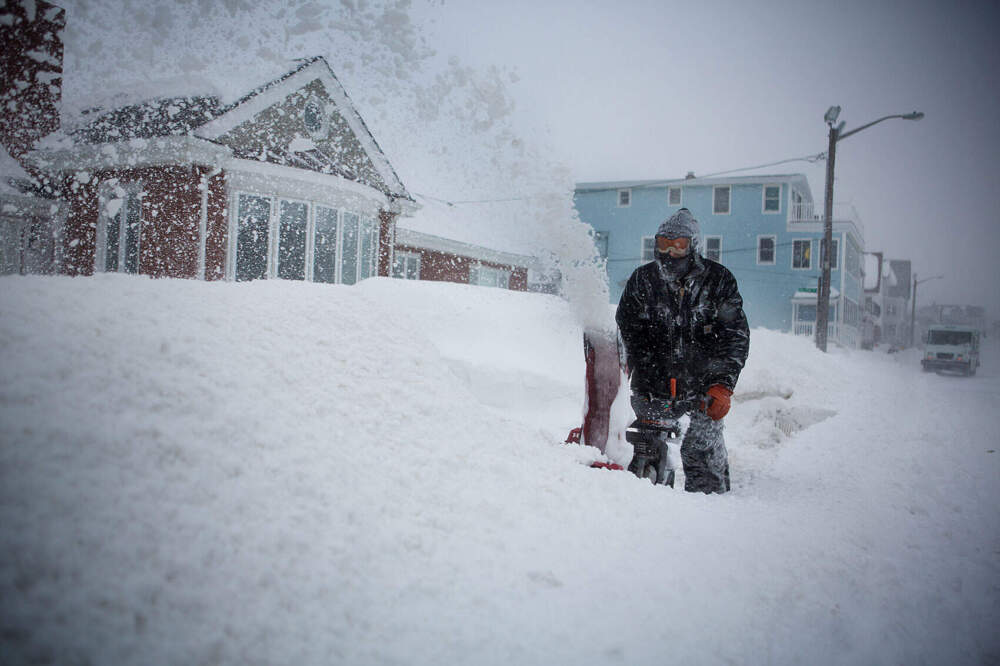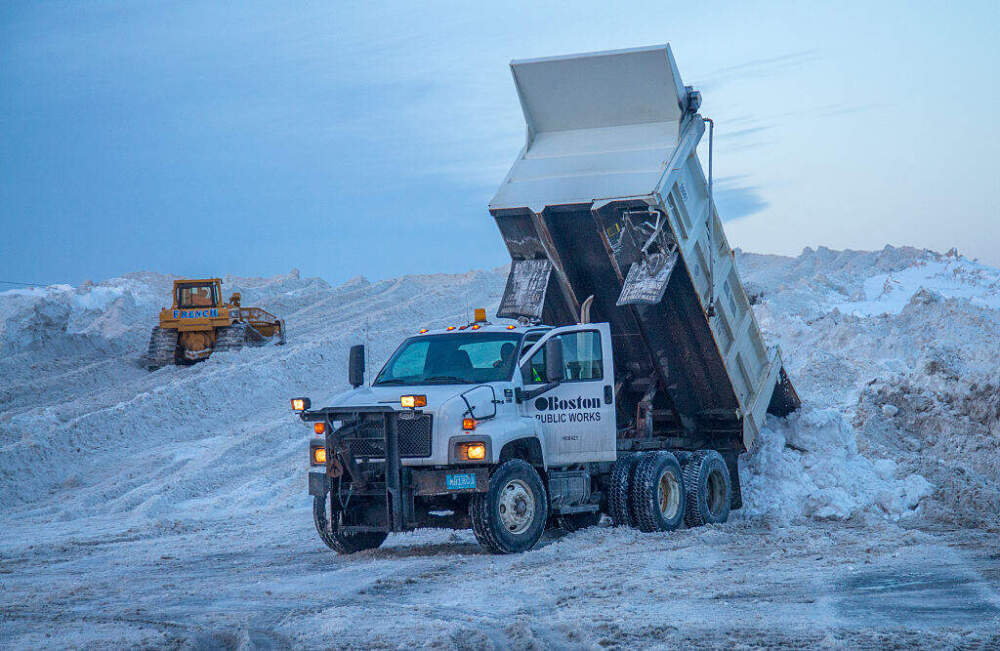Advertisement
Commentary
Lessons from the winter that would not end

It is a conundrum of life as a transplanted New Englander that you can hate winter but love snow.
Winter is the worst. Sorry, skiiers. It’s cold that seeps into your bones, darkness that descends by 5 p.m. Dry hands, chapped lips. Hat head.
Snow, on the other hand, is magical. It makes the bare branches look beautiful. It’s thrilling for dogs. It gives you a reason to chat with your neighbors.
And it feeds that New England sense of superiority. I grew up in the mid-Atlantic, where a single fallen flake causes pandemonium. When I moved up here, I was wowed by the mechanisms that kept snow from stopping us: the salting of the roads, the armies of plows and the general optimism of a people who drink iced coffee in mid-winter. It felt like justification: Yes, we chose to live in this godforsaken climate, but our competence would get us through.
The winter of 2015, henceforth known as snowmageddon, broke my faith in my adopted home. It broke us. It broke me. It broke at least one household shovel and one of those Swiffer-looking things that wipes the snow off the top of your car.

And it started so innocently: A Sunday evening storm, and the happy prospect of a snow day.
Remember snow days? Pre-pandemic, pre-Zoom, pre-Teams, pre-Google Hangout, a snowstorm gave you permission to do nothing. My kids at the time were 10 and 6 — too young for real homework, too small to be enlisted in any useful way to shovel. As the designated home parent, I was determined to help them celebrate. After the first storm, I oversaw the making of snowmen, pulled them through the backyard on plastic sleds and cooked exquisite blueberry pancakes.
By the second storm, I had ceded the childcare to Nickelodeon and was slapping together peanut butter and jelly sandwiches while staring at my laptop.
By the third storm, I was ransacking the cupboard for canned soup. (Try Cream of Mushroom, kids! You’ll love it!)
By the end, I was throwing jerky in their general direction and hoping for the best.
Advertisement
Because the kids would survive. My bigger worry was the chickens.
Yes, I had chickens in 2015. Three hens, to be specific, who lived in a coop next to the driveway and wandered around our backyard in the mornings, clear-cutting the vegetation and searching for worms. They were hardy New England breeds with thick feathers and fat bottoms. They had no need for sweaters or space heaters. Our biggest challenge, most winters, was rigging up a hot plate to keep their water bowl from freezing over.
I learned to appreciate the wonder of walking down the block encased by six-foot walls of white. And I learned that, even after a snow apocalypse, spring will come
Now, we had to chip through blocks of ice just to get the coop door open. We dug a series of trenches through the backyard and watched them tiptoe around like top-heavy ballerinas, lifting their little dinosaur feet in discomfort.
Our front yard was a different sort of challenge. Actually, to call it a yard is a vast overstatement: it’s more like a patch of dirt where we annually try and fail to grow hydrangeas. As snowmageddon progressed, the snow I cleared from the sidewalk and driveway piled higher and higher on that tiny patch until it towered well above my head and beyond the reach of my puny shoveling arms. I took to tossing snow recklessly into the air, then watching it land on the top of the pile and sprinkle back down to my feet.
At one point, my well-meaning next-door neighbor suggested I could clear out space by standing on top of the pile. I don’t know why I listened to her extreme-winter advice. She’s not a New Englander, either. But I did it: Stepped from my front steps onto the snow patch, one foot and then the other, and promptly sank to my waist. It felt like it took me an hour to maneuver myself out. It was the first, but not the last, time that week that the snow made me weep.

But I recovered. And I learned.
I learned that if you send a blanket text that sounds pathetic enough, someone will show up at your driveway with a snow blower. I learned that your kids will survive without pancakes, but that also, you can take a long break to play Monopoly and the world will keep turning quite happily. I learned how to back my car into the driveway without one of those newfangled rear-view cameras (like a caveman!). I learned to appreciate the wonder of walking down the block encased by six-foot walls of white.
And I learned that, even after a snow apocalypse, spring will come. A regular school rhythm eventually resumed. The chickens got their yard back. At some point, all that was left was a three-story mountain of dirty snow that the town of Milton had hauled from the streets in dump trucks and deposited in a parking lot next to the middle school. It didn’t fully melt until sometime in June.
By then, snowmageddon was a memory, subsumed into the usual cycle of New England seasons. Summer comes (the best), and fall (actually even better), and then the misery of winter comes again.
But if you live here long enough, you start to recalibrate. You think of 40 degrees as balmy. You contemplate an iced macchiato in February. And you start to romanticize. Every once in a while, when I wake up to see huge, beautiful flakes falling softly on my dead hydrangeas, I think of the snowmageddon and wonder if I miss the crazy landscape and the collective adventure.
Then I shake some sense into myself and resume my usual winter activity: dreaming about spring. Which will come to New England in, what, late May, right? Right.
Follow Cognoscenti on Facebook and Instagram. And sign up for our weekly newsletter.
This segment aired on February 7, 2025.
